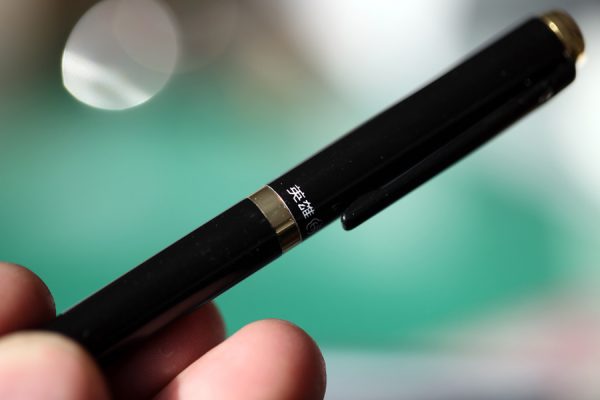
Satya Nadella, CEO of Microsoft, once predicted that pens would cease to exist in a decade. And that seems to be more or less true as portable electronic devices are fast taking over the old habit of writing.
If a person types the keyword “notebook” in any app store for mobile phones or PCs, hundreds of relative apps will pop up. Some may even have the function of allowing users to doodle with finger tips or to turn recorded voice straight into written words.
But it does not mean the good old habit of writing is disappearing. In reverse, fountain pens are just making its way back to people’s lives-not only as a cheap daily stationary, but also as a part of accessories.
It is easy to find a Lamy, a German fountain pen brand, in shopping malls in first and second-tier Chinese cities, with its cheapest option Safari selling at 380 yuan ($60). Its simple and colorful design has attracted many consumers. Some of its special designs, jointly made with other international brands-Marvel, Line Friends and Disney-were sold out at a price of more than 500 yuan as soon as they were released.
“I bought Lamy because I had an important contract to sign, so I wanted a proper pen for such an important deal,” said Xu Jinghao, a 27-year-old customer from Shanghai. “I can’t afford a Montblanc, so I thought Lamy will be a nice substitute.”
“The success of Lamy lies in its precise market positioning as a middle and high-end product targeted at young people with an attitude,” said Neil Wang, president of consulting firm Frost& Sullivan in China. “It is popular among the young because it not only has an outstanding look but also provides a good writing experience.”
Wang said in 2013 and 2014, Lamy exited JD and Amazon’s China portal to enhance its brand image of high quality.
“It drew a line between itself and the low-end stationary brands that rely on cheap prices and massive sales,” Wang said.
It seems that the fountain pen business is on the right track worldwide. According to Euromonitor International, an international consultancy, global sales of fountain pens rose 2.1 percent year-on-year in 2016. The consultancy predicted that sales will increase to $1.5 billion by 2020 from $1.04 billion in 2016. The China market contributed 48 percent of the global sales in 2016.
It was not just Lamy that witnessed a boom. Chinese pen brand Hero also recorded a rise in sales. On its 85th anniversary in 2016, the company said its sales had topped 100 million yuan. In the same year, it worked with Austrian crystal jewelry brand Swarovski to attract young female consumers. It launched pens featuring Swarovski crystals priced at 400 yuan apiece.
Wang said the key to success in the pen business is to position the brand image.
“Those who are born in the 1990s and beyond don’t like to be labeled. They want to be different, so they need special products with stories to bring up their own characteristics,” Wang said. “Therefore, domestic pen brands must combine their products with good storytelling and the features of this era, to meet the mental needs of young consumers.”


